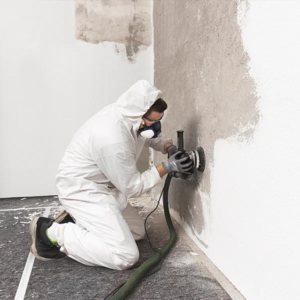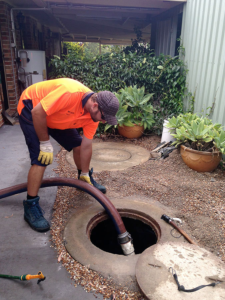You should call a technician if your garage door isn’t malfunctioning. They can quickly troubleshoot the problem and fix it faster than expected.
Bent tracks can cause erratic movement. It’s important to have them straightened or realigned by a professional to prevent further damage and costly repairs. Contact Garage Door Repair Buckeye AZ now!

Professional garage door repair technicians are highly trained and equipped with the tools to fix a variety of issues. Their extensive knowledge of both mechanical and electrical components allows them to quickly diagnose problems. They are also skilled at efficiently executing repairs, which minimizes downtime and disruption to your daily routine.
Performing your own repairs may save you money, but it comes with many risks. If you attempt to repair a complex issue, you could cause further damage or even put yourself and your family in danger. In addition, the wrong parts or materials can make your problem worse, resulting in additional costs down the road. Professionals are trained to identify potential problems and take proactive steps to prevent future breakdowns.
Repairing a garage door is no simple task, especially when you encounter more serious or complex issues. For example, broken springs can be extremely dangerous, and it is important to replace them correctly to ensure your safety and the proper operation of your garage door. Other serious problems that require the help of a technician include damaged sensor pads, problems moving your door up and down, wonky sensory pads, or any other issue that makes you worry about your safety or the safety of others.
Intricate Problem Solving
Many of the problems that occur with garage doors are complex. These include issues such as a motor that isn’t working, a broken sensor, or a crooked door. These problems can be difficult for homeowners to diagnose and fix. Professionals have the technical know-how to tackle these issues and have access to specialized equipment to help with the most challenging repair tasks.
Garage door technicians work in fast-paced and high-pressure environments where they are often required to respond quickly to same day service requests and emergency situations. They must be able to follow strict safety protocols and carefully handle equipment with high tension, heavy weight, and awkward shapes. They must also be able to read and understand detailed repair manuals. The skills and expertise that garage door repair technicians possess are invaluable to their industry and are crucial in providing clients with timely and efficient solutions to their home and business needs.
Warranty
One of the major advantages of hiring a professional to repair your garage door is that most companies offer a warranty on their work. This can save you a lot of money in the long run, as you will be able to have future problems resolved at no extra cost. It also shows that the company is confident in their work, which can be a good sign of quality service.
The type of warranty offered by a garage door repair professional can vary, but typically it will cover both parts and labor. Depending on the type of warranty, you will want to read the fine print to find out exactly what is covered and for how long. This will help you determine if the warranty is worth it or not.
Some manufacturers offer a limited warranty on their products, including the sections of the garage door. These warranties normally last for three to five years and will cover any discoloration or other type of defect. However, there are often restrictions on how these warranties can be used. For example, if you fail to follow the regular maintenance schedules outlined by the manufacturer, your warranty will likely be voided.
You should also check to see if your home insurance covers the cost of repairs on your garage door. Many insurances do not cover these costs, but some do, especially if the issue is caused by natural disasters or accidents. You will also want to be sure that the warranty you are purchasing is specific to your home and that it is clear about any limitations or exclusions.
If you are unsure of what to look for when determining the value of a garage door repair warranty, it is best to contact a professional for assistance. They will be able to help you understand what types of issues are covered and how to ensure that your repairs are performed correctly. They will also be able to advise you on any additional coverage that may be available, such as homeowner’s insurance or a replacement warranty.
Saves You Time
Professional garage door repair companies have the tools and equipment to diagnose issues in a short amount of time. If you try to do the repairs yourself without prior experience, you may spend hours or even days trying to figure out what’s wrong with your garage door, which can end up costing you more money in the long run as you keep wasting your time.
A garage door is often one of the most used parts of a house, so it’s no surprise that it gets damaged from time to time. While some damages are minor and can be ignored, others are crucial for the safety and functionality of your garage door. If the garage door springs get damaged, it’s best to fix them right away to avoid costly problems in the future.
When the garage door sensors don’t work, it could cause the door to close before you have fully exited your vehicle. This is a serious safety hazard, and the sensors need to be cleaned or repositioned. The opener’s circuit board may also need to be replaced, which usually costs around $150.
Replacing the track is another common repair, which can be done for under $200. The track can get dented or bent from impact or accidents, but a repairman can usually straighten it.
The door frame sits around the door to define its shape and offer additional insulation. A repairman can easily treat and patch rotting or damaged frames.
A snapped lock bar is a major issue because it secures the door when closed to keep you and your belongings safe. The lock bar can corrode or wear down, so it’s important to call for a repair immediately after it snaps.
The door rollers can become scuffed and rusty, but they’re easy to fix with a bit of cleaning or oiling. The door tracks can also become bowed or warped from heavy use, but these are easier to fix with repairs than replacements. A newer garage door will typically require less maintenance and upkeep, but older ones still need regular checks to ensure their safety features are working properly.
Save Money
Trying to fix your garage door yourself may seem like a good idea, especially when you watch someone else do it on YouTube. However, a DIY repair can be costly in the long run. For one, it can break the warranty on your garage door, meaning that you won’t be able to get it fixed under its original coverage. In addition, if you don’t know what you are doing, you may end up fixing the wrong thing or simply masking a problem. It’s always best to let professionals handle any garage door repairs, as they will have a better understanding of how the system works and what parts are likely to fail.
The cost of repairing or replacing your garage door depends on the severity and complexity of the damage. Often, you can save money by getting professional installation and disposal services bundled together. Moreover, smart budgeting can help you avoid paying too much for garage door replacement or repair services.
Garage doors have various components that need to be in working order for them to open and close properly, including springs, cables, and tracks. These components can be prone to wear and tear, which is why it’s important to have them inspected regularly by a professional. These professional inspections can help you identify minor issues before they become serious.
Some of the most common problems with garage doors include snapped cables, stuck doors, and missing or damaged weather stripping. The average cost of repairing these issues is $150 to $500. Dents and cracks in the door panels can be hammered out or patched, but they may require repainting to match the rest of the door if the original color has faded.
Snapped cables usually require replacement, which can cost up to $200. Whether you have extension or torsion springs, these cables are designed for a certain number of cycles and an estimated lifespan. Attempting to use them past this point can lead to damage and possible injury.
Stuck doors can be a sign that the springs or motor are worn out or have become misaligned. If the problem is severe, you might need to replace the entire motor and opener. Additionally, if your garage door is old and has a history of break-ins, it’s wise to consider replacing it with a newer model that offers tighter seals and insulating polyurethane panels.








